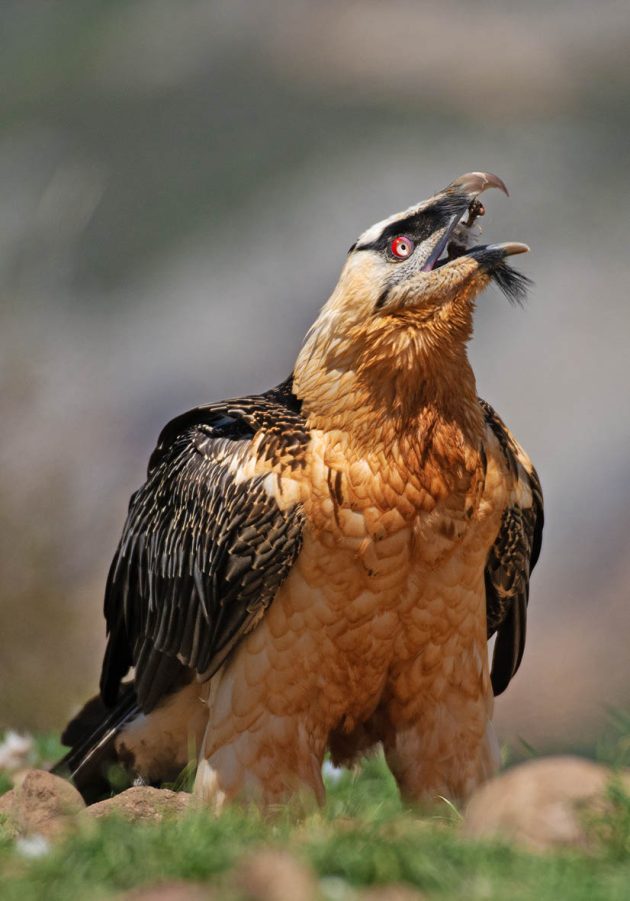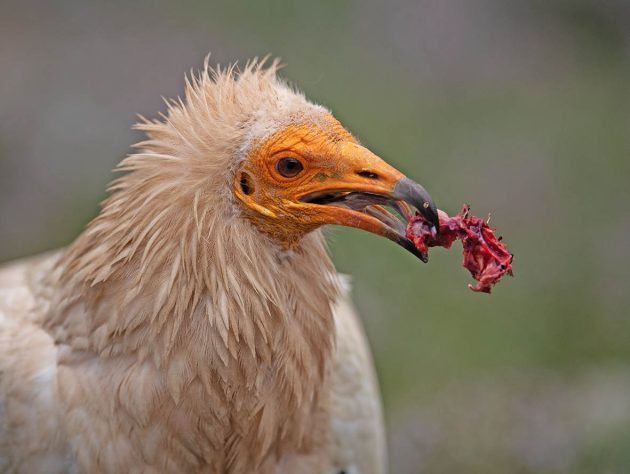I was brought up in the old school in which the established dogma, when it came to European vultures at least, was that there was a hierarchy when it came to feeding at carcasses. The story went something like this. The largest and most powerful species – the Cinereous Vulture (Aegypius monachus) – was the first to arrive. If not first, at least the others had to wait for this powerful bird to rip the carcass open. This would then allow other vultures to feed. The Griffon Vultures (Gyps fulvus) came next and they gorged themselves on the carcass once the Cinereous Vulture had made way. Next came the large Bearded Vulture (Gypaetus barbatus) who only took bones and therefore had to wait until the carcass had been picked clean. Finally, the small Egyptian Vulture (Neophron percnopterus) would come in at the end to take the leftovers from the party.
A recent paper seems to corroborate this picture. At least it shows that the largest, and by implication most powerful, species are dominant and most aggressive. There is also an adult-juvenile hierarchy within species. All this makes intuitive sense and may hold some truth but I have spent many years observing these four species and I am not convinced that the story is this neat.

For starters Griffon Vultures are perfectly capable of dispatching a carcass without having to wait for a Cinereous Vulture to arrive. They do this by starting to open the carcass up along the weakest point, usually the anus, the mouth or the eyes. Second, Cinereous Vultures may well be the more powerful of the two but, faced with overwhelming numbers of Griffons, they usually give way. Third, the power of the Cinereous Vulture anatomy allows them to consume parts of the carcass that Griffons cannot cope with, or choose not to go for. These parts include tendons, for example, and I have often seen Cinereous Vultures at the periphery of a carcass waiting from the Griffons to go away and leave these tasty morsels. So maybe all this power is for consuming the parts that are inaccessible to other vultures and not for dominating at the carcass, or a combination of both.


What about the Egyptian Vulture? This is the smallest species and socially subordinate. But are we looking at all this the wrong way? Egyptian Vultures often arrive with the larger vultures. They don’t wait according to the prescribed plan set out by ornithologists. And they jump straight into the mêlée. Maybe they are not the most powerful but they are adept at weaving their way round the squabbling Griffons and stealing the pieces that they are after. They may be socially subordinate but they are clever and skillful and they often get their way.

If one species fits the plan it is the Bearded Vulture. It always arrives last but, then again, why should it arrive any sooner? It only eats bones so there’s no point coming in too soon. If a Bearded Vulture arrives while other vultures are still feeding, it tends to hang around the edge of the main mass of vultures. Does this make the Bearded Vulture socially subordinate to the other vultures? Not necessarily.

All this goes to show how careful we have to be when making sweeping statements about anything in Nature. More often than not the animals themselves prove us wrong and all it would have taken would have been careful observation in the field in the first place. There is no substitute for that, not even camera traps even though these might help us considerably. If you have a chance to look at vultures closely, see what you find. If you get to see other vultures in other parts of the world, try and see if there is a pattern to their behaviour at a carcass.









Source link

